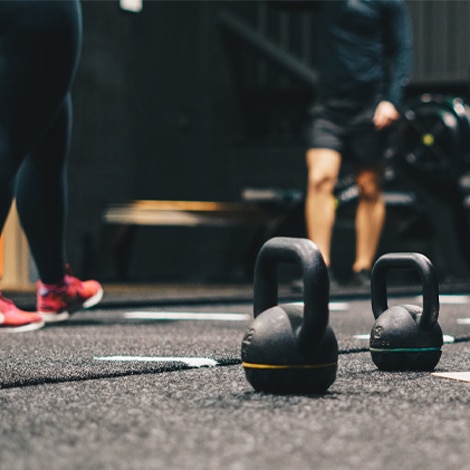by Jack Halley and Matt Howell
When sports academies, national associations, and individual teams with junior programs are trying to develop young athletes, they’re often hampered by an inability to track, access, and apply complete data. When such information is collected, it’s often spread between disparate systems that are only available to certain coaches and subject matter experts, creating silos that limit communication and collaboration.
In our work with professional sports organizations like the Denver Nuggets and Royal Antwerp FC, national governing bodies such as US Soccer, Olympic organizations like the Australian Institute of Sport, and more recently innovative leagues like Overtime Elite – we’ve seen the growing demand for data & analytics to develop the next generation of talent.
In this article, we’ll explore how elite sports organizations can utilize a human performance platform or an athlete management system (AMS) to standardize data collection, monitor progress throughout different age groups and disciplines, and improve talent identification and development.
One of the main challenges in youth sports development is that many of the coaches and specialists who work with junior athletes are in part-time or volunteer roles. As such, they have limited time to spend with the one or more teams that they serve and want to maximize face-to-face contact with their athletes.
An human performance platform like Smartabase enables them to do so while also taking advantage of data insights by making it quick and easy to enter information on the front end, process it without further input, and visualize it in graphical dashboards.
Monitoring Development from Participation to Representative to Elite Levels
The more resources an academy or club has at its disposal, the greater the level of analysis and reporting they can dive into. But even at a mass participation level, being able to gather, present, and act upon simple data sets can provide a big boost in the way young athletes are developed in the short and long term.
This brings up one of the biggest advantages of an AMS when it comes to youth development: it can be utilized effectively at all levels of sports. At the participation tier, a summer camp that serves 10,000 children with programs at different locations can use an AMS to collect basic data on every participant. This can then be accessed before next year’s camps so coaches can group returning players in a way that fosters competition and respects where each attendee is on their development journey.
At the next rung on the performance ladder is the representative tier. Here we find players who are competing regularly in a certain sport and are committed to continuing their advancement over several years for their club and, in some cases, their region or district. The difficulty here is that even though the coach-to-athlete ratio is lower than at the participation level, a lot of staff are still part time and they’re spread thin between multiple roles and responsibilities. A human performance platform such as Smartabase enables them to capture a few select data sets that can yield development insights, such as physical screening results, anthropometric numbers like height, weight, and muscle mass, and rudimentary load management information.
When combined and presented via reports and dashboards, this data can start to paint a fuller picture of each athlete via their ever-evolving profile, which can help coaches gain greater knowledge about player comparisons, development milestones, and more without the need for them to cut into the valuable and finite facetime they get with their players each week. At both the participatory and representative levels, staff members are usually grateful to finally have a way of tracking their players’ development in an organized way via an easy-to-use system.
An AMS can also help ease communication between part-time staff through basic availability reporting. For example, the part-time S&C specialist or coach can add a few notes about the status of the athletes so the part-time physiotherapist comes to training with some context. In this way, the AMS aids communication between staff who all only have a small amount of contact time with the athletes each week.
When you get to the elite level of youth sports, there are more full-time coaches and domain experts such as physiotherapists, nutritionists, and strength and conditioning specialists. Traditionally, these subject matter experts have only collected and viewed narrow data sets that pertain to their own area.
A human performance platform like Smartabase can help them see that doing so is only going to get them so far and demonstrate why a more integrative approach better serves young athletes by breaking down silo walls and bringing experts onto the same page with how they manage, collaborate around, and communicate about development data.
At this higher tier, performance matters because competition is at its most intense and you’re dealing with talented junior athletes, some of whom have the potential to play professionally and/or represent their country.
As such, an AMS provides a competitive advantage by connecting the dots between game day outcomes and the wealth of data that a club, academy, or institute can collect on each athlete. The performance staff starts to see how a trend in one data set influences a similar one in another, perform more detailed comparisons between players in a certain position, and take a more granular look at each athlete’s advancement. In doing so, they can tailor an individual’s training in a way that gives them a better chance of meeting their full potential.
Using Data Standardization to Guide Development Pathways
With a human performance platform, it’s easier for academies and clubs to set and track development pathways.
For example, they can profile expectations for a young athlete at a certain position so coaches can see how they stack up against their peers. Staff can then make adjustments to their programming, expectations, or both.
If an organization offers programs across multiple sports, Smartabase allows them to see exactly where a player is in their physical development pathway in relation to other athletes of their age and gender in every discipline. It could be that a 14-year-old basketball player is showing all the attributes of a competitive rower, and so a coach could encourage them to try this sport. Or that a football player who is smaller and lighter than the gold standard pros were at their age but is projected to grow a lot in the coming years and is still performing above expectations, and so should stick with the sport rather than switching.
For Olympic committees, sports institutes, and multi-sport academies, a human performance platform enables the leads of departments such as medical and strength and conditioning to decide which data they want to collect, monitor, and apply across the board. This kind of top-down standardization provides greater organization, increased consistency, and better long-term development and analysis of young athletes.
The more standardized and centralized data collection is, the easier it becomes to monitor progress and make comparisons using the same data sets, and the less variability there is between the various tiers of the organization. This makes it simpler to identify what’s working well for individuals and teams, and which elements of preparation and performance can be adjusted to further youth athletes’ long-term development, whether they are at the participatory, representative, or elite level.
From the perspective of a domain expert working in youth sports, a human performance platform can become an invaluable intra and inter-sport comparative tool. Let’s say that a physiotherapist has been primarily working with runners at an academy, and suddenly has the opportunity to also serve the rugby team. While the demands are quite different, an AMS can reduce the learning curve and ease this transition by providing similar standardized data for both athlete populations, giving the physio the ability to make some basic comparisons.
In such an academy or institute, the way injuries are logged, reported, and managed across different activities can also be homogenized, making it easier to develop best practices in how care is delivered to young athletes when they’re injured or ill.
Young athletes frequently change coaches as they move up through age groups and often try new sports before deciding which to specialize in. Typically, it’s difficult for their data to move with them, as each coach and team has their own way of collecting information and some of it remains stuck in spreadsheets, handwritten notes, and other disparate data siloes.
In contrast, a human performance platform allows data to follow the athlete, no matter which age groups and disciplines they move between. From a coach’s perspective, having a complete history of each young player at their fingertips enables them to see where an athlete has been, what level they’re at now, and how their progression is trending toward the future. This allows them to better serve the needs of the individual, as well as making more informed team selection decisions.
The AMS can also help coaches educate young athletes about the development process. Visualizing data provides a “why” behind its collection and helps explain how doing so can improve performance.
For example, we can use basic data like rate of perceived exertion (RPE) x training duration to begin teaching athletes what volume, intensity, and overall load are, and how coaches use this data to drive programming. This can evolve into conversations about periodization and other more complex topics.
Wellness data has a wide range of education points too. Coaches can begin to teach how lifestyle factors – along with training load – are related to overall wellness, such as how sleep impacts mood, fatigue, and therefore performance. Simply getting junior athletes to consciously think about how their body and mind feels is hugely important.
Informing Pro Teams’ Scouting and Draft Decisions
Another advantage a human performance platform provides is more data-driven scouting. For example, scouts for all 18 Australian Football League (AFL) clubs use a standalone Smartabase site that sits over the top of the platform that coaches and players use for day-to-day performance data management to compare young athletes as they move up through the junior ranks and eventually enter the annual draft.
They can compare players of the same age against each other and evaluate draft prospects against picks from previous years and current AFL stars alike to see how much future potential they have at the pro level. This helps make it easier to see which up-and-coming talent is the best fit for each team’s needs as they evaluate rookie prospects in a new draft class.
Smartabase makes this kind of in-depth youth scouting possible because of the system’s ability to integrate multiple different data sets that can follow each player’s development as they move up through age groups.
GPS metrics from training, advanced match statistics, testing results from the draft combine, and more are combined in automated reports that present a comprehensive view of how a player has advanced over time, what their current capabilities are in relation to their peers, and what they might be capable of as they transition into a men’s AFL squad. From a coach’s view, reports comprised of the same data sets allow them to accurately monitor academy players’ performance in real time.
The earlier a team, academy, or institute implements an human performance platform like Smartabase, the greater the breadth of data they’ll be able to collect on their young athletes and more adept they’ll become at serving the needs of the next generation.
With such a platform in place, it’s easier than ever before to establish development pathways, monitor players’ progress along them, and use data to make informed programming and selection decisions. A human performance platform also amplifies the effectiveness and maximizes the time of the performance staff, facilitates comparative profiling within and between sports, and provides more in-depth information to selectors and scouts as young athletes advance from adolescence to adulthood.








